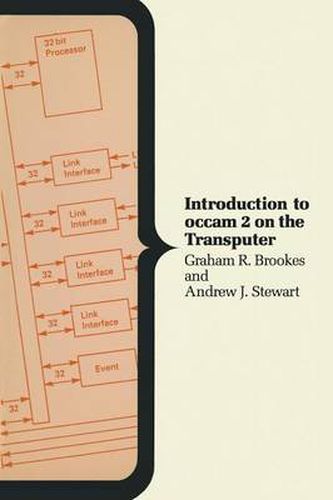Readings Newsletter
Become a Readings Member to make your shopping experience even easier.
Sign in or sign up for free!
You’re not far away from qualifying for FREE standard shipping within Australia
You’ve qualified for FREE standard shipping within Australia
The cart is loading…






This title is printed to order. This book may have been self-published. If so, we cannot guarantee the quality of the content. In the main most books will have gone through the editing process however some may not. We therefore suggest that you be aware of this before ordering this book. If in doubt check either the author or publisher’s details as we are unable to accept any returns unless they are faulty. Please contact us if you have any questions.
Traditionally, computer programming has been sequential in nature. There has been the need to write a program to follow an exact sequence of steps to attain the required result. As parallel computers become more common, and the operation of existing computers itself becomes more parallel, there is a need to have the ability to write parallel programs. This guide provides an introduction to one such parallel language, OCCAM 2, and aims to provide support for practical programming in concurrency. The text contains an overview of the operation of a transputer and its characteristic novel architecture, which illustrates many of the important features that the language uses to achieve parallelism. Several practical examples are developed throughout the text to illustrate a few of the applications suitable for parallel programming techniques. No previous experience of writing parallel programs is required by readers of this text, however a general knowledge of programming techniques is beneficial.
$9.00 standard shipping within Australia
FREE standard shipping within Australia for orders over $100.00
Express & International shipping calculated at checkout
This title is printed to order. This book may have been self-published. If so, we cannot guarantee the quality of the content. In the main most books will have gone through the editing process however some may not. We therefore suggest that you be aware of this before ordering this book. If in doubt check either the author or publisher’s details as we are unable to accept any returns unless they are faulty. Please contact us if you have any questions.
Traditionally, computer programming has been sequential in nature. There has been the need to write a program to follow an exact sequence of steps to attain the required result. As parallel computers become more common, and the operation of existing computers itself becomes more parallel, there is a need to have the ability to write parallel programs. This guide provides an introduction to one such parallel language, OCCAM 2, and aims to provide support for practical programming in concurrency. The text contains an overview of the operation of a transputer and its characteristic novel architecture, which illustrates many of the important features that the language uses to achieve parallelism. Several practical examples are developed throughout the text to illustrate a few of the applications suitable for parallel programming techniques. No previous experience of writing parallel programs is required by readers of this text, however a general knowledge of programming techniques is beneficial.